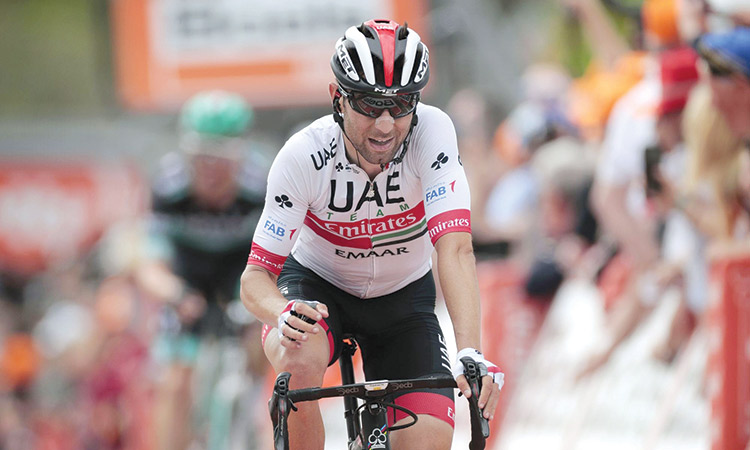
Abu Dhabi Police GHQ has launched the “Electronic Road Permit Service for Amateur Cyclists” in cooperation with the Integrated Transport Center, Abu Dhabi Sports Council and Abu Dhabi Cycling Club, as part of the GHQ’s continuous efforts to preserve the safety of all road users in accordance with the procedures and regulations in place.
AD Police GHQ explained that the public can submit their applications using the Abu Dhabi Police website within a period of no less than 48 hours from the date of practicing the permit.
AD Police GHQ stated that under this service, permits are provided to groups of cyclists who practice cycling that requires long-distance cycling on roads with speeds exceeding 80 km/h at the times they want to exercise.
The GHQ also explained that the requests are evaluated by the Traffic and Patrols Directorate in terms of the permit’s time and track to be cycled on. The service aims to regulate the process of using bicycles on the roads of the Emirate of Abu Dhabi in accordance with the highest standards of security and safety.

The GHQ advised that in order to obtain the permit, “cyclists” must meet the requirements, such as wearing a helmet, placing front and rear lights on the bike, and providing an escort vehicle to protect the group of riders. The vehicle must be equipped with hazard lights and adhere to security and safety requirements such as placing bicycles in the places designated for them without Impacting or obstructing of traffic.
AD Police GHQ indicated that their keenness to set requirements to regulate the trips of bicycle owners traveling on roads with speeds exceeding 80 km / h and specifications that protect drivers and other road users come due to the interest of the Emirate of Abu Dhabi in cycling and the small number of tracks designated for cycling in the emirate.
The GHQ warned against complacency in following the security and safety procedures on bicycles and their uses in compliance with the directions of the Abu Dhabi government to make the emirate one of the global destinations for practicing this sport, showing its interest in monitoring in a way that enhances safety of cyclists and road users, stressing the continuation of efforts aimed at implementing best practices, which contributes to making our roads safer within the (Priority of Making Our Roads Safer) and in line with the directives of our wise leadership to apply the best practices in the field of traffic safety.
It is worth mentioning that the use of bicycles includes three types. The first: a means of transportation within cities, in which bicycles run most of the time on sidewalks and at low speeds. The the second is a means of entertainment and picnics; It is usually used in tourist areas, public parks or residential neighborhoods where the speed of the bicycle does not exceed 20 km/h. (Bicycle lanes within the city are dedicated to this category of users). The third is for sports; where groups practicing cycling have increased in the recent period, which requires distances of at least 50 km and high speeds that sometimes reach 60 km / h which may pose risks on other bicycle lanes’ users. Such groups cycle on main roads.












